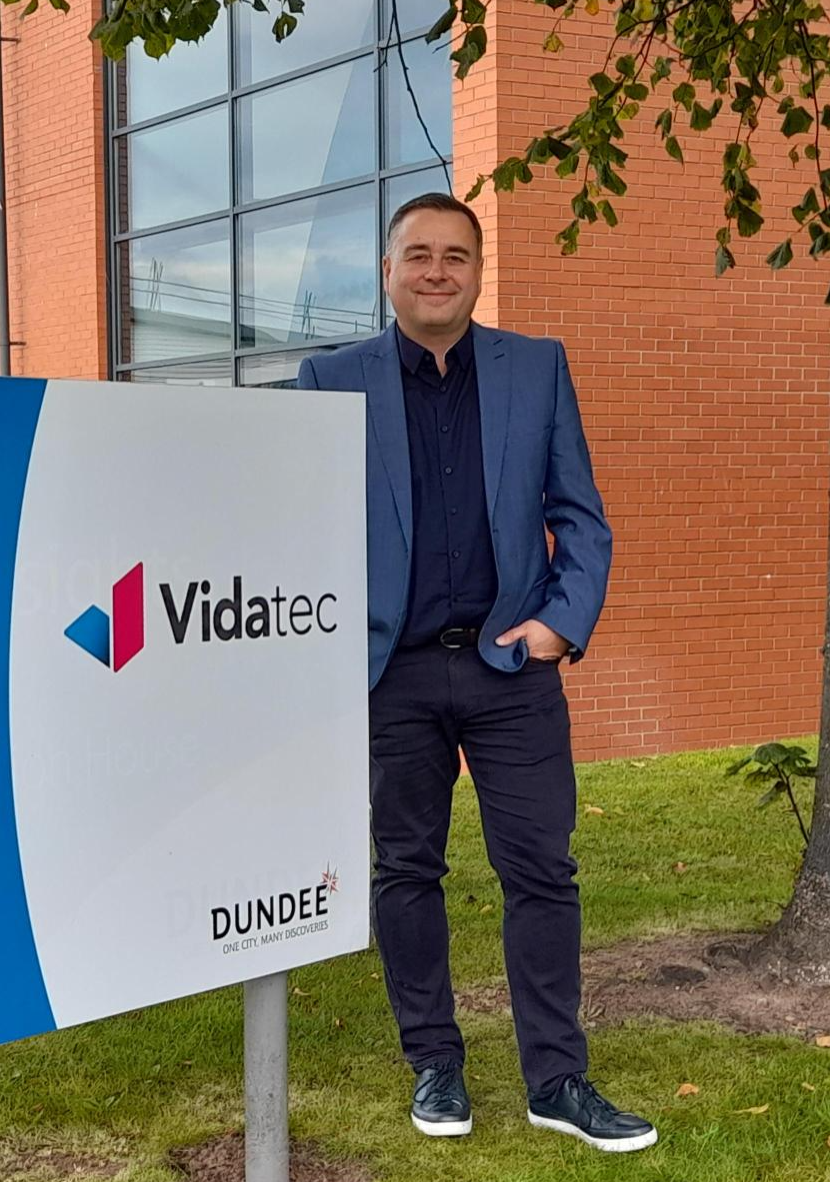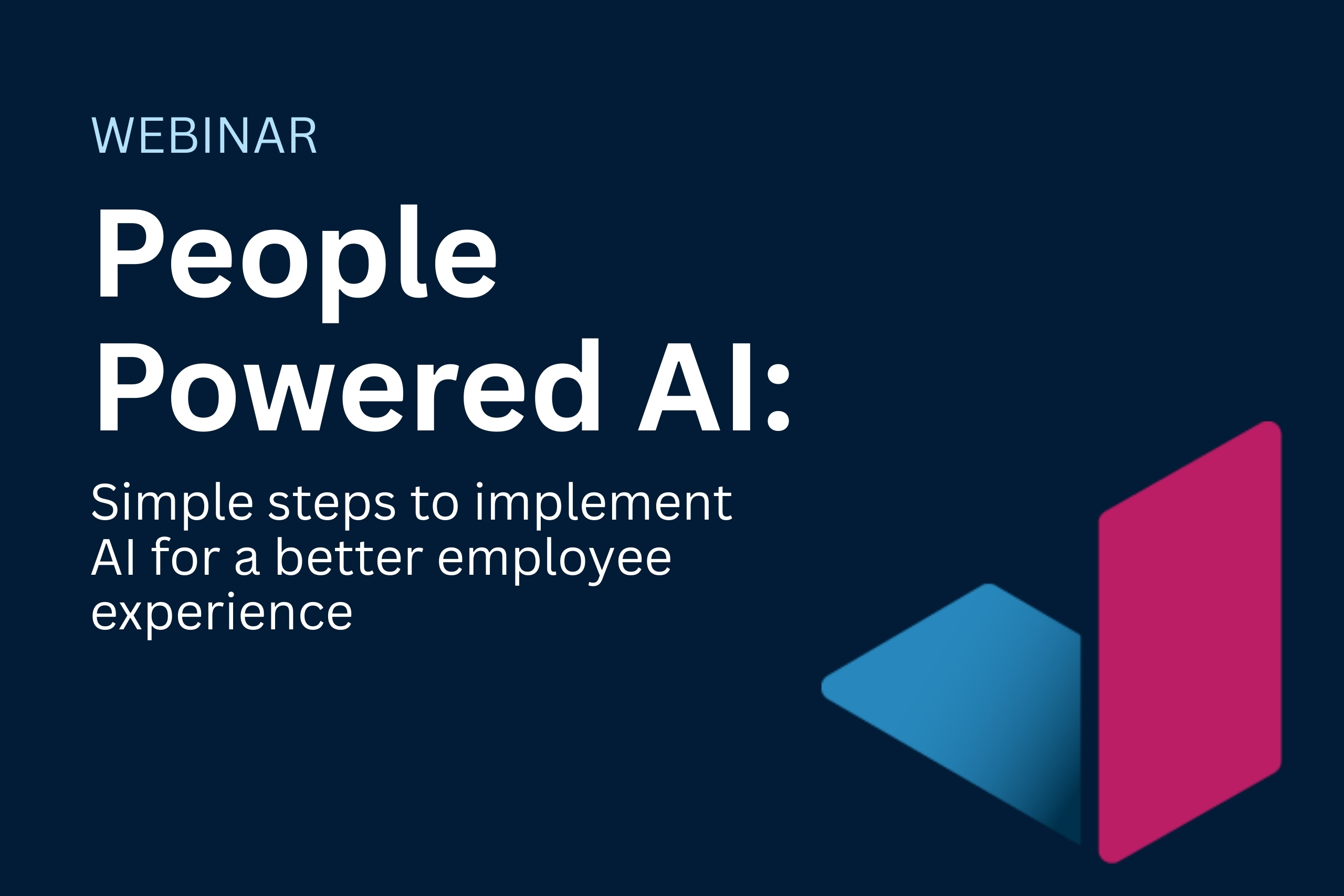Simple, Practical Steps to Implement AI for a Better Employee Experience
AI, implemented and adopted properly, could and should be the most revolutionary tool of our generation to drive a better employee experience across, almost every industry. Between its ability to automate mundane, error-prone tasks, and process, analyse, and summarise vast amounts of data within seconds, it can remove many of the biggest day-to-day frustrations of your team.
Yet, in the rush to implement AI tools wherever and whenever possible, we’re seeing rising employee fatigue, unclear expectations, and a growing gap between what leaders think is happening and the reality.
A 2025 study from Cisco found that 97% of CEOs plan AI integration, but only 1.7% feel fully prepared for it. This new research shows a lack of progress in how to sustainably incorporate AI into organisations along with a serious disconnect between ambition and action.
If you’re feeling overwhelmed by AI, you’re not alone. Between bold predictions, and pressure to get ahead, many leaders and teams are finding themselves lost. For many organisations, this fatigue isn’t about the fear of technology, it’s down to a lack of context, communication, and support when it comes to using it. The good news? That’s fixable.
In this blog, we explore why AI fatigue is occurring, what’s getting in the way of successful adoption, and how to reset with a human-first approach, particularly:
If you’re wondering how to rebuild trust, reduce burnout, and make AI work with (not against) your teams, this is a good place to start. Because when it comes to AI and employee experience, it’s not about using more tools, it’s about using the right ones well.
Why Your Team is Tired of AI: The Reason for Fatigue Amongst Employees
A recent study found that 75% of employees lack confidence in utilising AI, and 40% struggle to understand how to integrate it into their existing roles. Meanwhile 36% are worried AI might replace their jobs altogether. These statistics are a clear indicator of oversaturation and burnout when it comes to AI messaging across teams.
So, what’s behind the fatigue:
-
-
- Oversaturation of AI: In the media and our home lives, as well as in the workplace, the term ‘AI’ is being attached to everything, from toothbrushes to beauty products and even vacuum cleaners.
- Unrealistic timelines: Quick wins are promised with the use of tools like ChatGPT and Gemini but without the cultural groundwork there is a disconnect between expectations and real time usage.
- Lack of context or training: AI tools for employees are being deployed without support, leaving people unsure on how or why to use them.
- If your teams seem hesitant to use AI or are disengaged with your strategy, it may not be resistance, it may be confusion. With the right mix of human touch, and practical education, you can transform uncertainty to security.
-
Finding Your Real Starting Point: How to Take the First Steps to Improving Employee Experience with AI
Before you roll out another tool or workflow, it’s crucial to ask if your organisation is truly ready? Not only from a technical point of view but a cultural one.
Many AI projects stall not because the technology doesn’t work, but because the people using it aren’t ready. Commonly decisions are made ‘top-down’ where tools are selected without input from the very teams they’re meant to help. This leads to poor adoption, frustration, and wasted investment. Successful AI integration services begin by meeting people where they are. That starts with understanding the reality of your teams.
Ask yourself…
-
-
- What are your high friction processes? Look beyond IT here – think about HR, customer service, sales, marketing. Which functions across your business would benefit from automation?
- How confident are your teams in using digital tools? Even technically advanced employees may struggle with up taking new platforms or ways of working.
- Are your learning and development functions equipped to support best practice for employees? Even strong digital strategies can fall flat without the skills and support to sustain them.
- Do your people feel safe to experiment, fail, and learn? A culture of security is essential for innovation and change.
- Do you have open conversations about AI, or are people still guessing? Without clarity and understanding, uncertainty will creep in.
-
At Vidatec we are AI consultants that help organisations adopt technology in a human-centric way. A simple but powerful approach to identify both strengths and gaps in your strategy, along with the best starting point and rollout for responsible AI adoption.
Our team has decades of experience across tech and business, making us best placed to provide AI solutions and implement new strategies into your organisation.
Working with Vidatec starts with discovery. Firstly, we conduct a session with your leaders that get to know you and your business. This is followed by a series of small group sessions to understand those on the front lines. We hear their concerns, daily inconveniences, and ideas on what would make them more effective as individuals and as a team. From there we establish how, we can implement AI to improve their experience as employees.
Then we can get to work on implementing tools that provide solutions to ease real problems. This process ensures AI is fostered culturally and adopted in a way that’s both understandable and sustainable for your business.
From Confusion to Confidence: How to Adopt an Employee-Centric AI Strategy
When employees feel like AI is being done to them rather than built with them, resistance is inevitable. But here’s the truth: AI doesn’t have to divide your teams.
When implemented with structure, it can empower employees, enhance collaboration, and reduce the burden of repetitive or frustrating work.
For leaders, the first step is to acknowledge the fear. Telling your team “AI won’t replace you” isn’t enough. People need to see what’s happening, why, and how it directly impacts their roles. They need transparency around what tools are being introduced, how those tools align with business goals, and most importantly, how they support them in doing their jobs better.
To move from uncertainty to confidence, teams need frameworks and tools that work in real life. Here are some tips to encourage adoption:
- Start small, solve a problem, and demonstrate impact: Avoid AI for AI’s sake. Define your AI problem statement in terms of the tangible challenges your people face. Show your team that you’re taking a responsible approach to transformation and that deliverables will have a positive impact on their day. This should increase adoption and encourage your team to look for additional areas for improvement.
-
-
-
- Start small, solve a problem, and demonstrate impact: Avoid AI for AI’s sake. Define your AI problem statement in terms of the tangible challenges your people face. Show your team that you’re taking a responsible approach to transformation and that deliverables will have a positive impact on their day. This should increase adoption and encourage your team to look for additional areas for improvement.
- Be prepared to test, learn and pivot: AI represents the cusp of the next industrial revolution, but success and value won’t arrive overnight.
- Invest in AI skills across your teams: AI awareness and confidence will vary across your organisation – showcase the benefits of AI to accelerate successful adoption.
- AI should be multi agent to meet your people’s needs: There’s unlikely to be one technology or AI model that delivers everything your organisation needs. Empower teams with solutions that answer problems and build confidence.
- Openly acknowledge AI fears and concerns: Existential threats of being replaced can create blockers to adoption, which may overshadow the human benefits of AI to your people.
- Like your people, your AI solutions should work for your organisation: Consider the information, data and resources they need access to in order to provide value and context to their human colleagues.
- Encourage ‘Change as Usual’ (CAU): Technological change is inevitable. Employ this mindset to help your people see opportunities for AI innovation.
-
-
Leadership has a powerful role to play, not as top-down enforcers, but as facilitators of reassurance and shared momentum. Those who communicate openly, act with empathy, and prioritise participation will face less resistance and build teams that are not just compliant, but confident.
If you’d like to hear directly from our leadership team, register now for our upcoming 30-minute webinar, ‘People Powered AI: Simple Steps to Implementing and Adopting AI for a Better Employee Experience’.
Conclusion: AI Fatigue isn’t Failure – But Ignoring it Could Be.
If your organisation is experiencing AI fatigue, it doesn’t mean you’ve failed. If anything, it means your people are paying attention. The pressure, and endless mention of those two little letters is a lot, and its coming at teams faster than most can keep up with.
Take AI fatigue as a signal, not a setback. It’s an invitation to pause, reassess and recentre your approach around the people who will make or break your AI strategy. Start small, start clearly, and start together.
Vidatec believes the most successful AI adoption is people-powered. We support businesses in creating confident, connected teams through practical tools, thoughtful communication and culture-first transformation. AI should work for your people, not the other way around.
Let Our Team Help Your Team
Take the Next Step to Delivering a Better Employee Experience Through AI with Vidatec
Learn More About our AI Consulting Services
We cut through the AI hype to help you understand what actually works in your specific situation. Drawing from 300+ real-world projects, we help you implement AI in simple, practical steps that actually stick and deliver results.
Register for our Next 30-Minute Expert-Led AI Webinar
Hear directly from our CEO, Ross Wilson, and CTO, Nick Welch, as they provide a framework to assess your organisation’s AI readiness and outline practical tools and strategies to implement a true human-first AI implementation.
Meet the author











